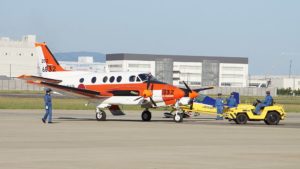Introduction
Aircraft towing can be defined as the movement of an aircraft in a forward motion, while the engines are off. The towing of an aircraft is done by the use of a special ground vehicle that supports or is attached to the nose landing gear. Aircraft towing can be done to move both out service and in service aircraft. This significantly affects the dissemination of processes and the necessary qualification for the flight occupants. However, there are some situations that should be considered while towing an aircraft because they threaten flight safety. Such threatening scenarios should be keenly observed and they are explained below in detail.
 Threat of aircraft towing to flight safety
Threat of aircraft towing to flight safety
The main threat of aircraft towing to flight safety is when the aircraft being towed collides with another aircraft. In such a case, there will be two different collisions with potentially risky outcomes:
- Collision with an aircraft taking off or landing on an operational runway. This is regardless of whether the aircraft being towed has a legal ATC runway possession clearance or not.
- Damaging impact of the towed aircraft on an unoccupied or stationary aircraft. Such damages are caused by minor impacts that are not detected before departure of either of the involved aircrafts.
It is therefore important for the Ground Crews to be aware of the two types of risks and be thoroughly trained on the two ATC practices. Additionally, Ground Crews should also be trained on how to tow the particular aircraft involved. Towing of the aircrafts involved includes creating awareness on turning arcs and aircraft dimensions. Nevertheless, it is important to note that there are some risks involved when towing an aircraft. Such risks can be managed as explained below.
Risk Management
Incidents and accidents are enough evidence of the number of recurrent factors (RFT) that lead to aircraft damage during towing. Some of the recurrent factors (RFT) include:
- Failure in maintaining general situational awareness of the rest of the traffic whether the necessary ATC clearance is held or not.
- The towing personnel with the responsibility of communicating with ATC may have insufficient RFT skills.
- The ground crew towing may have inadequate knowledge on aircraft turning arcs and dimensions.
- Failure in keeping the towed aircraft on a taxi guidance line.
- Unprofessional brake operation by personnel handling the brakes during towing.
The risk of towing collision is worsened by the handling of such operations during dark hours or when ground visibility is very poor. Most scenarios can be prevented by observing precautionary measures, exercising patience and handling the aircraft with care to avoid expensive repairs and personnel injury.
Knowing the safety guideline about aircraft towing is important if you want to develop understanding about towing. Follow this link to find interesting ideas and tips.